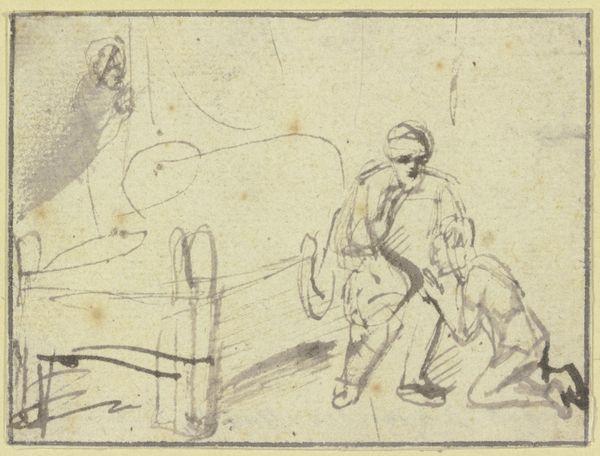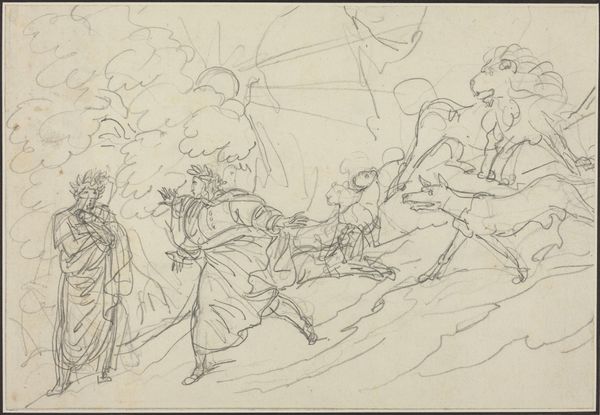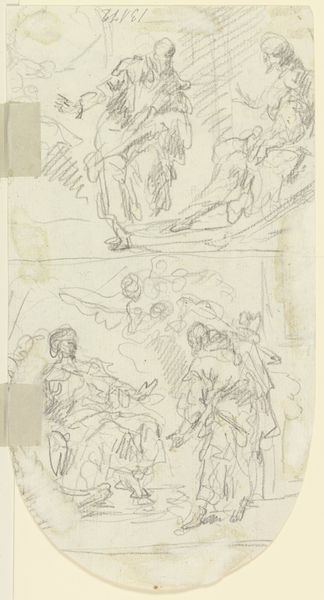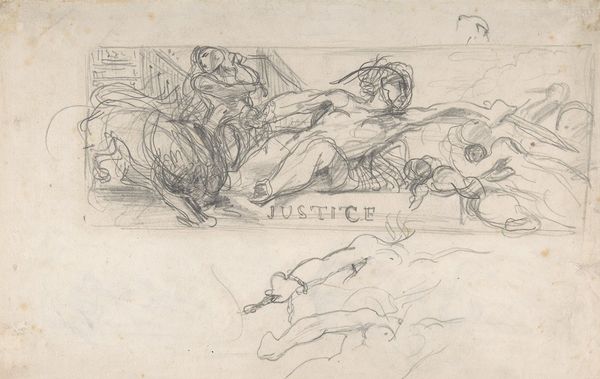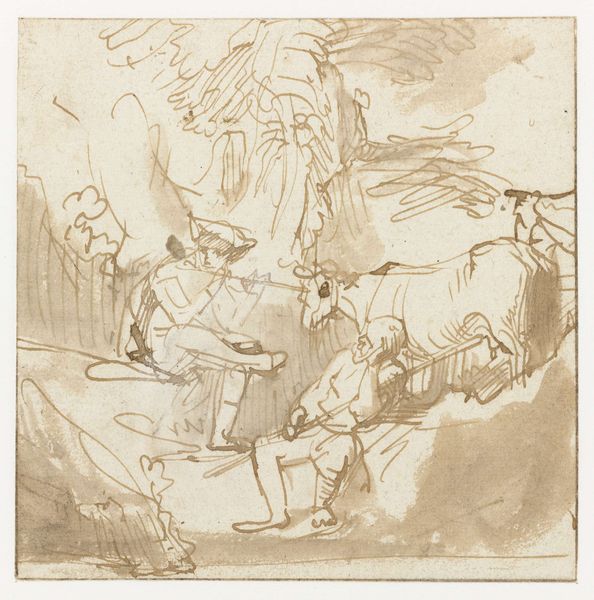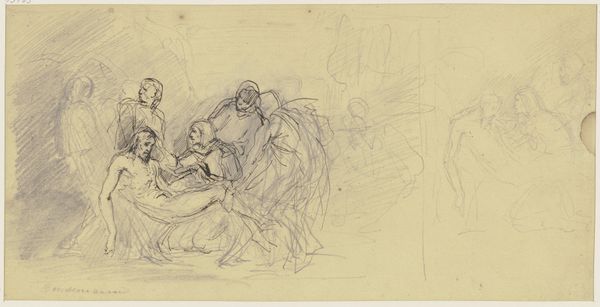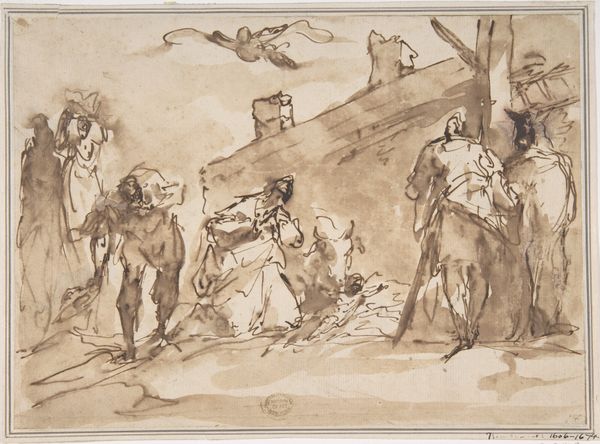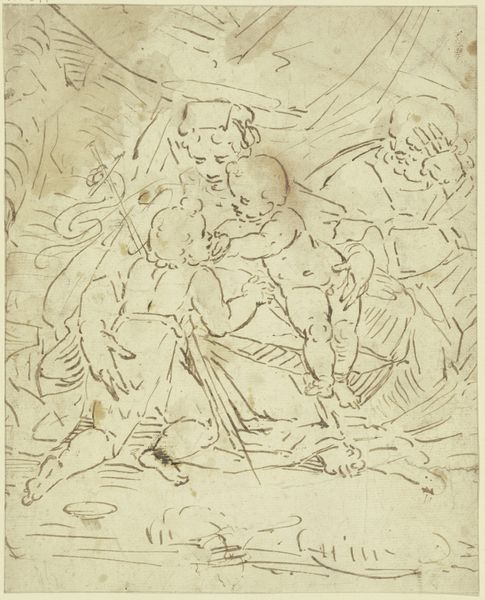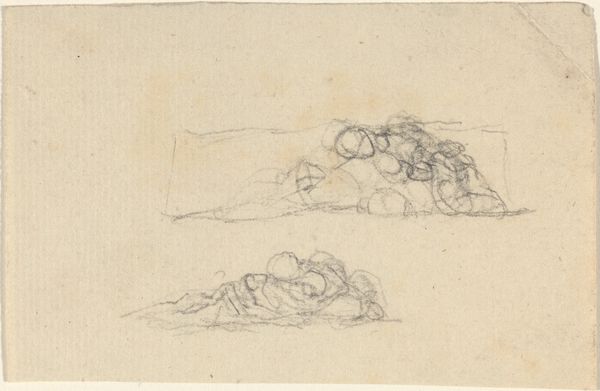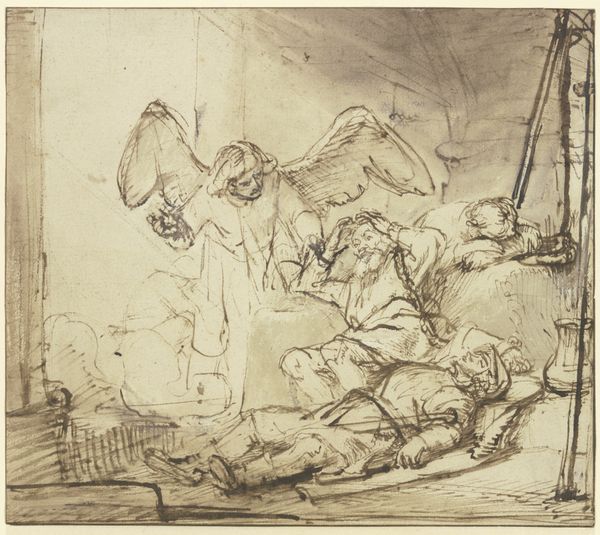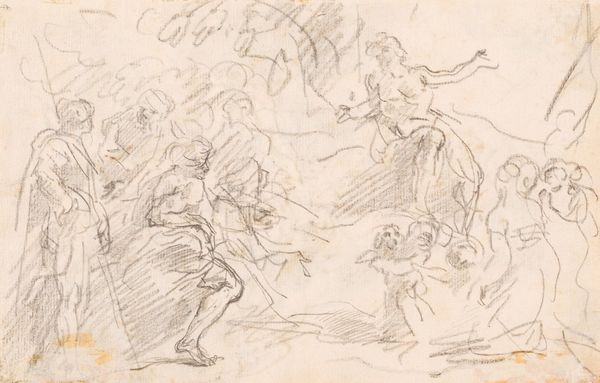
drawing, paper, ink, pen
#
drawing
#
baroque
#
pen sketch
#
figuration
#
paper
#
ink
#
pen
#
history-painting
Copyright: Public Domain
Curator: Samuel van Hoogstraten’s pen and ink drawing, “Lamentation of Abel's Death,” arrests the viewer with its raw emotional power. Editor: My first impression is of stark grief—the chaotic lines mirroring the profound disturbance of loss, the medium amplifying its directness. Curator: Exactly. Hoogstraten distills the essence of tragedy through symbolic figures: Cain, grief-stricken above Abel's lifeless body; Eve and Adam at their side; a family’s original wound of guilt and despair replayed on the body of the slain. Note how the starkness of the composition draws your eye straight to Abel. Editor: Yes, and thinking about it, it is impossible to ignore the cultural and political implications of fraternal violence represented here. We're looking at an ur-narrative, the beginning of violent hierarchy, as ancient as patriarchal rule and still raging across communities today. The raw sketch emphasizes not only sorrow but also the ongoing consequences and perpetuation of that original sin. Curator: Hoogstraten does amplify that historical context. Though rendered in ink, this drawing functions as more than just preparatory. It encapsulates themes from the Old Testament through fluid lines, effectively embodying the tragedy, as well as the visual culture of remorse and responsibility in ways reminiscent of northern baroque artists like Rembrandt, who had been one of Hoogstraten’s teachers. The circular, sweeping lines almost suggest a whirlpool of grief engulfing these first humans. Editor: The figures below, nearly ghostly, contribute to that. What gets lost and left behind in this drama of male rage and male victimhood? Whose stories never quite take form but haunt us nonetheless? I also can’t help but to note, in connection to what we were mentioning, that its status as a drawing, so immediate and unprocessed, invites reflection on contemporary instances of injustice where mourning must be rapidly translated into direct, and collective action. Curator: Your observations deepen the interpretive possibilities, broadening the artistic scope toward considerations of both psychological depth and the cyclical nature of guilt and atonement in society. Editor: Indeed, thinking through the historical narratives allows a fresh engagement with this image; one that moves beyond mourning and grief, to interrogate historical, present, and, therefore, political meaning.
Comments
No comments
Be the first to comment and join the conversation on the ultimate creative platform.
